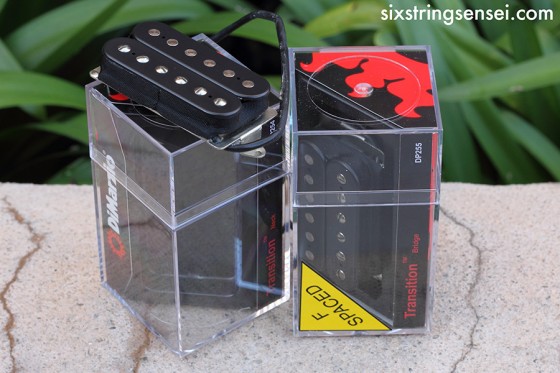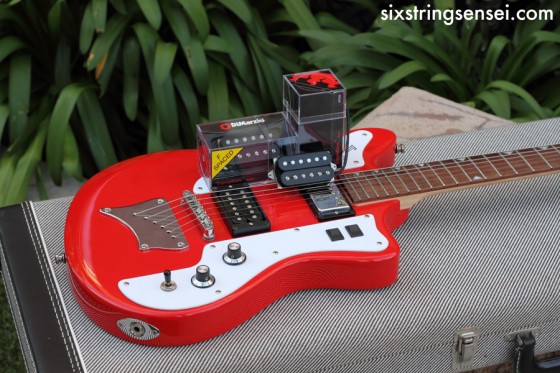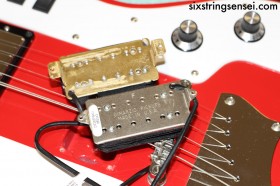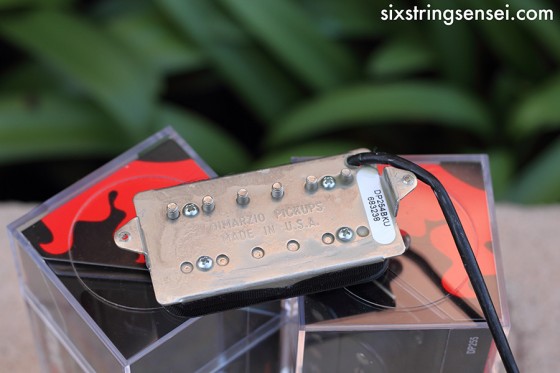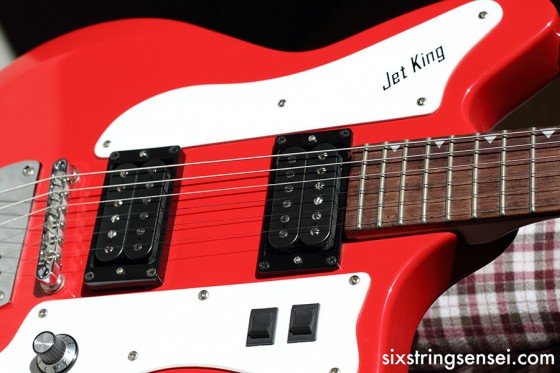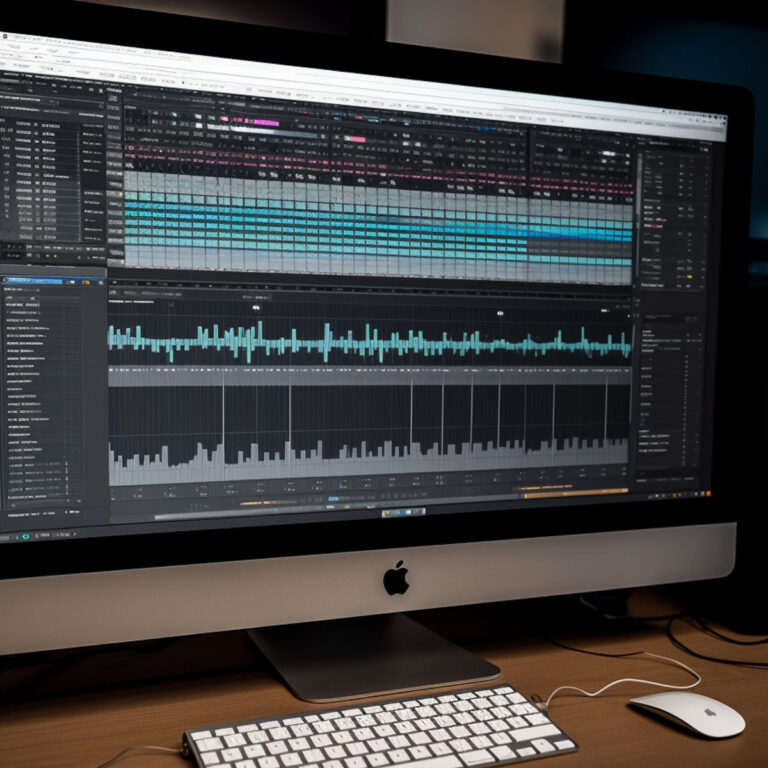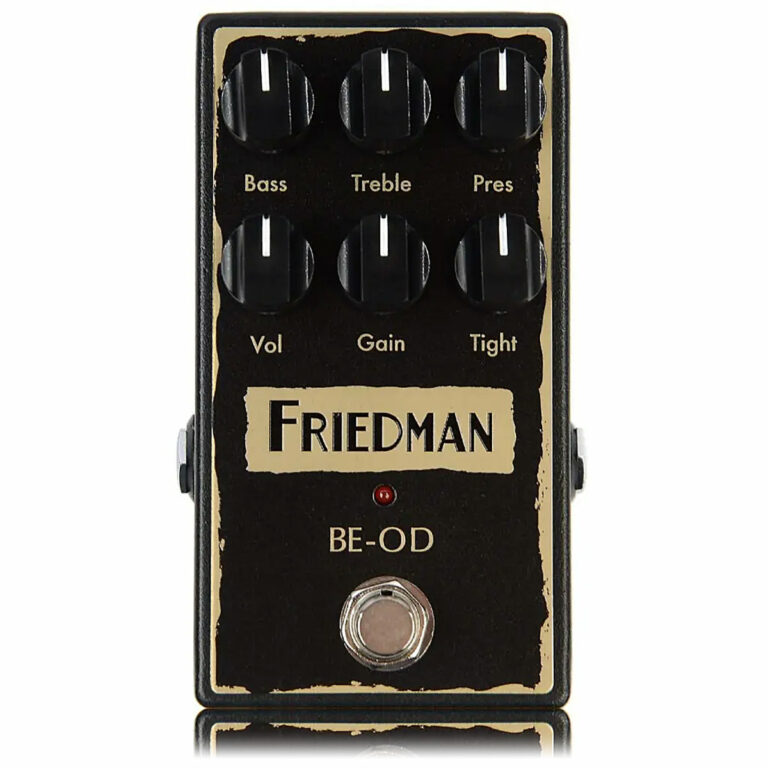DiMarzio Transition Steve Lukather Bridge and Neck Pickups Improve a Guitar
Six String Sensei is taking a close look at the DiMarzio and Steve Lukather collaboration that has resulted in the DiMarzio Transition pickups. We have a pair of humbuckers perfectly matched for a dual humbucking guitar: The DP255 Transition Bridge and the DP254 Transition Neck pickups.
The SixStringSensei review of these pickups will be a little different than most pickup reviews on the web. We’re not comparing a great DiMarzio pickup to another great DiMarzio pickup to tell you how one has more bass than the other… or how one is more articulate, more chimey, or more bell-like… or any of those other adjectives that don’t really translate well from paper and computer screen to your ears.
Apart from the obvious, more or less bass, clarity and quality of tone, depth and output and such identifying qualities… Other descriptions vary too much from ear to ear, amp to amp and guitar to guitar to properly describe a pickup using words. People read those reviews and often end up more confused then they were before reading the review.
Let’s get started
I’m not looking to replace a great pair of pickups with another great set. What I’m attempting to do is completely transform a guitar from something a bit stale into a beautiful tone machine.
This review is a quite objective and has a clear goal in mind:
I’m looking to test the new DiMarzio Transition guitar pickups with the goal of upgrading a relatively inexpensive guitar.
I’m experimenting on one of those inexpensive guitars that just so happens to be great. You know the type I’m talking about – A guitar that feels much better than the price suggests. A guitar that with a few upgrades can hold its own with the best of them. It’s the guitar you have when you need to have an inexpensive one in the quiver for messing around, experimenting and for those gigs where talking the Les Paul might be too risky to be worth it. In my case, it’s the Ibanez Jet King II.
I’m not claiming it to be the ultimate cheap guitar, but it certainly does the part. Since I got this guitar I have done a few upgrades to it such as adding Sperzel locking tuners. Now I’m looking to “transition” it into something great. Cue the pickup upgrade.
Now, on paper, the high output and balanced tone in the Tone Guide of the DiMarzio Transition pickups tells me they should be a perfect upgrade for the JKII.
The tone guide says this about each:
DiMarzio Transition Bridge DP255
- Treble: 4.5
- Mid: 7.0
- Bass: 6.0
- Output: 390
DiMarzio Transition Neck DP254
- Treble: 5.5
- Mid: 5.5
- Bass: 6.0
- Output: 258
This tells me the neck pickup should be a bit more balanced as the numbers are closer to each other, but with less output than the bridge pickup.
Reasoning behind the upgrade
There’s a reason I decided to go this route. I could’ve simply tested the DiMarzio Transition Bridge pickup in my American Ash Strat HSS and called it a review. However, the amount of players that start off with inexpensive guitars and decide to upgrade them is pretty substantial. Many players cannot afford to transition (dang, I did that again) to their dream guitar as their follow-up instrument. Plus, many are emotionally attached to their first guitar for years. While it may not make sense to a guy that’s been playing for 25 years and has 10 PRS guitars in his collection… There are plenty of guys that want to upgrade their current axe.
This experiment is for those guys.
Let’s look into a bit of history first
Guitar genius, session master and Toto guitarist Steve Lukather was known to switch to active pickups a while back and many of the players that followed his tone were put off by the fact. After a number of years it turns out that Mr. Lukather looked to DiMarzio to develop a passive pickup to serve as a transition into his new evolution of tone. Word has it Steve Lukather has been going through big changes in his life and even named his latest musical offering “Transition” – In which he plays his signature LIII™ Music Man guitar with DiMarzio Transition pickups throughout the record.
Sounds like he and DiMarzio could’ve not chosen a better name for the pickups. Everything in the story behind them suggest change, evolution and of course a transition.
This is what I’m looking for this Ibanez Jet King 2.
First look
To the untrained eye they may look like any other black pickup out there, but you’d be wrong. A keen eye for quality can quickly tell upon observation that these are quality builds.
The materials used, the wax job, the taping, cabling and even the backing plates… they all suggest a quality product. There is no messy wax on the back like on some cheap pickups. You can tell these where built with care.
Upon removal of the stock Ibanez pickups putting them side by side confirms this. The DiMarzios are clean, the backing plates use a nice metal with a neutral color rather than the cheap-looking yellow-ish steel on the stock pups. The stock units have messy wax and no markings to indentify them as anything special.
Installation
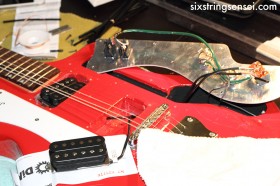
Installation was a bit of an ordeal, but that wasn’t DiMarzio’s fault. It would have been the same with just about any pickup.
My problem was that I wanted to keep the stock functionality of being able to coil-tap each pickup individually, but the stock wiring has completely different colors than the DiMarzio units. DiMarzio does offer wiring diagrams for many popular guitars. But of course, the guitar in question being a rather limited run model, was not there.
DiMarzio and many other sites online offer standard wiring diagrams for all kinds of pickup configurations. However, the coil-tap switches in the Jet King 2 are a bit different than the usual push/pull pots or DPDT switches many guitars use. Needless to say, it took me a while to find a diagram close enough to my stock setup and I still had to do some experimenting and testing to make sure I got it right.
I finally worked it out and installed the pickups in the stock configuration of 3-way bridge/bridge & neck/neck and being able to split each pickup to only have the inner coils active. With the coil-tap, I can do inner-bridge/inner-bridge & inner-neck/inner-neck. I can also combine a split-coil with either remaining humbucker since the coil-tap switches are individual – 1 for each pickup.
An alternative method would’ve been to rewire the whole dang thing. That was my next moved had I not deciphered the stock wiring.
DiMarzio supplies new springs and screws with the pickups but I reused my old ones as they were fine. Also, DiMarzio’s installation and wiring instructions included in the box are clear and precise enough, but going online to look at wiring schematics is often necessary for more complex wiring setups.
Now for the real test
After double-checking that my connections were all good, I fitted the guitar with new strings and the proceeded to tune and intonate it.
I used my favorite amp, a Mesa Lonestar for the test. I love the clean sounds of this amp and it really lets you hear the nuances of what the guitar is doing. With overdrive you can still hear your picking and you can tell apart strings within a chord very nicely.
I played the guitar through my pedalboard for a session. Then I played it for another plugged directly into the amp with no effects board. Finally, I pitted it against my American Strat and against some recordings of the Jet King II when it was stock. I did all this in order to properly get to know these pickups to be able to put together a well-informed overall impression rather than to try and describe each configuration individually.
Overall impression
The first thing I noticed was how much hotter both of the new DiMarzio Transition pickups were in comparison to the original stock no-name units in the Ibanez. One thing I never liked about the stock units was the lack of presence and power. The Transition pickups completely fixed that problem. The change in output is substantial.
Before, I used this guitar for certain songs but when I needed more grunt I had to change over to a different guitar. With the new pickups I feel I get a lot more versatility.
Another thing I noticed was clarity – especially at higher volumes. Before, the tone of the Ibanez used to get quite muddy at higher volumes. However, with the DiMarzio Transition pickups the clarity I was looking for in this instrument is finally there.
The Transition Bridge
I ordered the bridge pickup as an F-Spaced model. I found it fit the Ibanez JKII just fine. I found the bridge pickup to be much brighter and considerably less bassy than the neck unit. The tone guide on the DiMarzio site claim both pickups have a bass rating of 6. It might have to do with how the treble and mid frequencies work with the bass from one pickup to another, and of course the position on the guitar. I also see this varying a bit from guitar to guitar. But the different in tone between the DiMarzio Transition Bridge and Neck is much more obvious than in between the stock units. But working individually, I was glad that I got rid of the tinny powerless tone I used to have in the bridge position.
Like I said earlier, the bridge pup is quite hot and overdrives a bit with the guitar’s volume knob at max. But the pickup is very susceptible to the position of the volume knob – meaning, the volume knob is much more usable. I noticed that rolling off on the volume a bit cleaned the tone very well without losing tone or much output at all. This is something I could not do very well with the stock unit – it was already too weak to even want to attempt reducing its output.
Another thing I really liked about it was the clean tones when dialed in right. I rarely ever use the bridge pickup for clean playing – I usually leave that job to the neck pickup and focus on the bridge for overdrive or full distortion – Same thing in my Strat HSS with a humbucker at the bridge position. But, with the DiMarzio Transition Bridge DP255 I found myself using that position for clean tones too, and loving it.
The Transition Neck
The DiMarzio Transition Neck DP254 was a noticeable improvement over the stock unit in power, tone and clarity. At first it took me by surprise as I was not expecting the output. The newfound punchiness was a welcome addition to my guitar’s tone.
While I can honestly say that my favorite of the 2 Transition pickups would be the bridge, the neck pickup is an awesome little pup. The main reason for my preference is simply because I prefer the sound of a single coil at the neck rather than a humbucker… Which brings me to coil-splitting.
I highly recommend you to go all the way and install coil-splitting switches in your guitar when converting to DiMarzio Transition pickups. These pickup work so well in split-mode that it would be a waste not wiring them to make full use of the feature.
Like I said earlier, I prefer a single-coil at the neck. Splitting the Transition neck pickup turned out to be an excellent option giving me improved tone over my stock setup, but providing me with tonal options that work excellently for some country, rockabilly and surf rock tunes I’ve been working on. Really, really pleased with the sound of the DiMarzio Transition DP254 Neck pickup when in split single-coil mode. Highly recommend it.
I played the guitar with the 3-way switch in the neck position for hours in order to get fully acquainted with the new improved tone. I found it worked very well with a distortion pedal and also with a Tubescreamer set with low distortion and high-output to increase gain and breakup – like a booster. I also played it with a Fulltone Clyde Wah while using a Keeley compressor to control the level of brightness and peaks going into the wah – a good way to control harshness in a wah.
Needless to say I was very pleased with the results.
Other notes on both pickups
Both Transition Bridge and Neck pickups are very articulate in that you can hear the nuances of your playing. The picking is very distinguished and you can very much make out the picking action of the player. If you pick hard, the action translates really well through the amp. Pick softly and you don’t lose that definition, but the subtlety in the playing comes through. They are very conducive to expressive playing, crescendos and decrescendos.
I noticed this articulation translating into very peaky output. What I mean is the tone sounded very uncompressed – very tri-dimensional. I was very pleased about that as I felt there was lots of space between peaks and valleys in my tone.
Given this quality, the DiMarzio Transition pickups were very responsive to my Keeley compressor. Even with very little compression dialed in, the compression effect was very obvious. I had to set the compressor a little differently than I would otherwise, mainly reducing the amount of compression to keep more of the original dynamics of the pickups intact.
Final verdict
Overall, the project was a big success. The use of the DiMarzio Transition guitar pickups to improve a nice but inexpensive guitar resulted in an excellent choice. I’m very happy with the results and I feel that with the upgrades I’ve done to this guitar, including the new pickups, I now have an instrument that is more useable and versatile when it used to be a guitar I mostly left at home.
Does it sound as good as the American Strat I pitted it up against? Well no. But, you have to remember… A guitar is as good as the sum of all its parts. The DiMarzio Transition pickups brought my Ibanez Jet King II to a level that it had never been to before. However, the wood and quality of build cannot stack up to an American Strat, Les Paul or Paul Reed Smith. But, do the math: It’s a $250 (I paid $200) guitar with $75 in Sperzel locking tuners and 2 DiMarzio Transition pickups that list for $115, with a street price of… whatever. Add it all up and we’re talking about $500-$550 worth of guitar, that sounds great and feels great and stays perfectly in tune. That’s a heck of a deal if you ask me. My Strat was twice as much.
So the bottom line is. If you are looking to improve the tone of that dear ol’ guitar that you don’t play much anymore but are too attached to it to give it up, a set of DiMarzio Transition pickups would be a great investment to breathe new life into it. You will most likely end up with a guitar you can fall in love with all over again for a fraction of the cost of the premium guitar you are toting to gigs these days. And, if you are looking for more output, clarity and a very articulate tone, might as well drop the Transitions into your main guitar for a test. You might like them so much you might buy whole other set!
Where to Buy
You can buy the DiMarzio Transition pickups using the link below. The link is for the bridge humbucker. After you add that one to your cart, search right there for the neck pickup to order both at the same time. See the link below:

